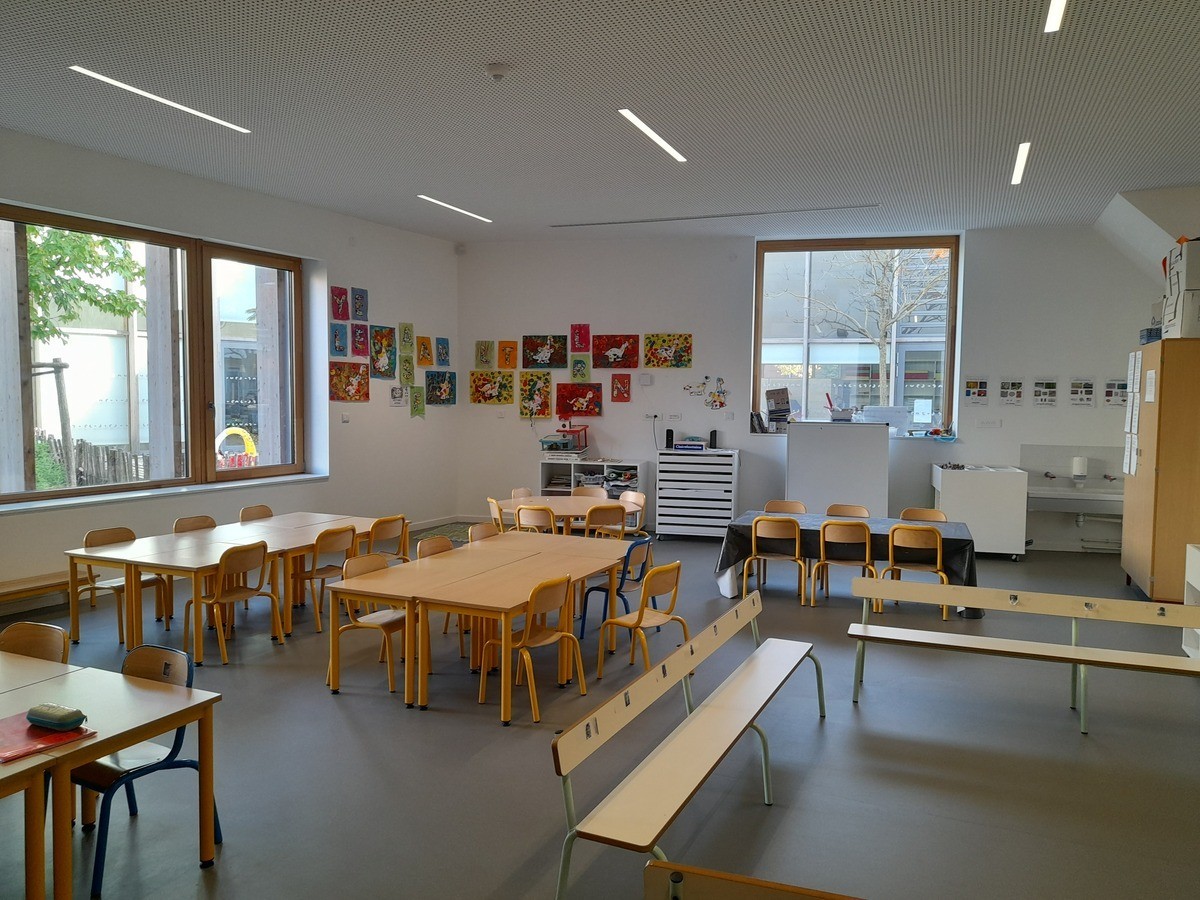Health, comfort, savings: indoor air quality is on the rise

There is no longer any need to prove that good indoor air quality in a building is absolutely essential, both for the health of its inhabitants and to ensure comfort and savings. This is notably why organizations such as Cerema work in the field to defend the importance of ventilation and aeration in the tertiary sector as well as in individual houses. Update on the subject with Cécile Caudron, Building Performance and Indoor Air Quality Project Manager.

C21: Do you think that the importance of indoor air quality (IAQ) in buildings is sufficiently recognized in France today?
Cécile Caudron: Local authorities cannot always take the subject of air quality into account as much as they would like because of the associated costs, in this period of financial and energy tension which forces them to review their priorities.
However, they know this issue better and better. On the one hand, by the effect of the health crisis, with certain barrier gestures which have helped to become aware of the importance of air renewal. On the other hand, thanks to publicity effects, which notably resulted in the purchase of CO2 sensors in schools, partly subsidized by the State. More recently, the release of the PNSE 4 – National Environmental Health Plan – in May 2022 proposed updating the regulations concerning indoor air quality. Finally, two decrees on mandatory IAQ monitoring were published at the end of December.
In France, the issue of IAQ has been at the forefront since the 2000s. But these recent changes have really given a boost to the subject and triggered widespread awareness.
What are the main levers for improving air quality in buildings?
CC: In terms of priorities for action, we first recommend limiting the sources of air pollution. For this, it is particularly a question of using building materials, products and furniture with less emissions, but also of carrying out work on uses – avoiding the use of products that emit pollutants, ventilating at the right time, etc. –, which requires communication and support.
Then, of course, you have to renew the air. This involves ventilation and aeration, which are two complementary levers. The work we have carried out recently confirms that the installation of effective ventilation is essential for good air quality at home. We do not recommend a particular ventilation system, the whole thing is to adopt equipment adapted to your home, well calibrated and with the right flow rates. The maintenance of this material is very important so that it can last over time.
What materials should be used as a priority to improve air quality in buildings?
CC: Since January 1, 2013, there has been mandatory health labeling on construction materials , but also decoration, for example, on which the general public can easily rely. By choosing products listed A+ or even A, we ensure that the impact on indoor air quality is limited. We can see that the manufacturers have made a lot of effort on this subject, and the choice is quite wide. Of course, it is also possible to rely on existing labels or FDES.
Is there atypology of buildings on French territory in which air quality must be improved as a priority?
CC: There are not necessarily buildings more subject to this problem, however, there is a type of population that is more exposed : first and foremost, children. The little ones in particular are very sensitive to any type of pollution, being always on the ground, with an organism still in full development. They must therefore be protected as much as possible. This is also why the regulations initially focused mainly on establishments welcoming this type of public (nurseries, schools, etc.)
As a reminder, indoor air pollution includes not only volatile organic compounds, but also all pollens, molds, physical pollutants such as fine particles or fibers, which cause allergies. The impacts can range from simple discomfort to pathologies that can be very serious.
Are construction professionals sufficiently trained in these issues?
CC: There are indeed training courses for professionals on the subject of IAQ, in particular offered by Cerema, which continues to develop its own skills in this regard. But there are still efforts to be made to go even further, especially in initial training. We also feel that there is demand and interest for this subject on the part of companies.
Moreover, even if there are companies specializing in ventilation – especially in the tertiary sector and few for single-family homes – there is not yet this famous profession recognized as “ventilist” to date. For housing, this is mainly linked to a question of profitability: the equipment is not very expensive, and is generally involved in a mass of work. For small one-off ventilation projects, it is therefore generally not a professional specialized in the subject of air quality who is involved.
I still keep an optimistic eye on the subject. We feel that things are moving in the right direction .
Through what concrete actions does Cerema improve air quality in public buildings today?
CC: Cerema is carrying out several actions to meet these different challenges:
- Support for local authorities on the issue of indoor air quality, by answering their questions or helping them to find out about and implement the regulations in force, or even to diagnose their IAQ, optimize their IAQ and their energy consumption, measure the IAQ in their premises, etc.
- Research and expertise work to advance knowledge on these subjects, by making resources available on our various media;
- We can also set up training specifically created for a company or a community, adapting to its problems .
Do you have any future projects to report to us for the year 2023 in this regard?
CC: We are currently co-piloting the “Hub Air Energie” with IFPEB. This project lasts 24 months and aims to support local authorities and tertiary buildings to help them make an inventory and then improve the quality of the air inside their buildings, while controlling their energy consumption – and Why not even save money!



